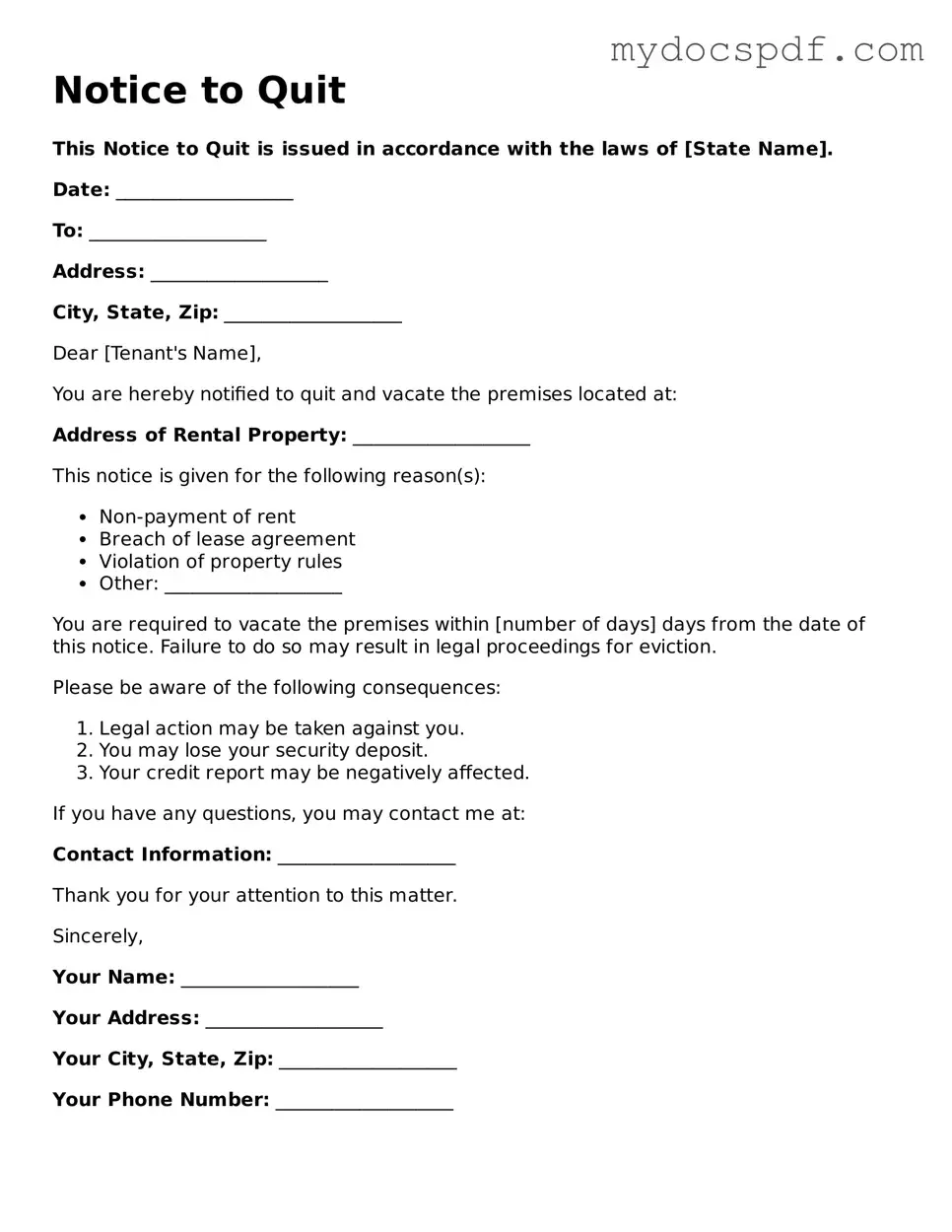Notice to Quit
This Notice to Quit is issued in accordance with the laws of [State Name].
Date: ___________________
To: ___________________
Address: ___________________
City, State, Zip: ___________________
Dear [Tenant's Name],
You are hereby notified to quit and vacate the premises located at:
Address of Rental Property: ___________________
This notice is given for the following reason(s):
- Non-payment of rent
- Breach of lease agreement
- Violation of property rules
- Other: ___________________
You are required to vacate the premises within [number of days] days from the date of this notice. Failure to do so may result in legal proceedings for eviction.
Please be aware of the following consequences:
- Legal action may be taken against you.
- You may lose your security deposit.
- Your credit report may be negatively affected.
If you have any questions, you may contact me at:
Contact Information: ___________________
Thank you for your attention to this matter.
Sincerely,
Your Name: ___________________
Your Address: ___________________
Your City, State, Zip: ___________________
Your Phone Number: ___________________
